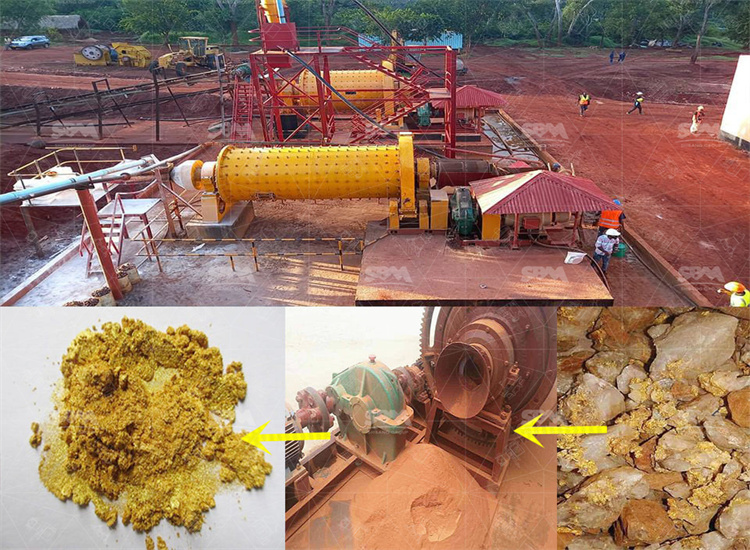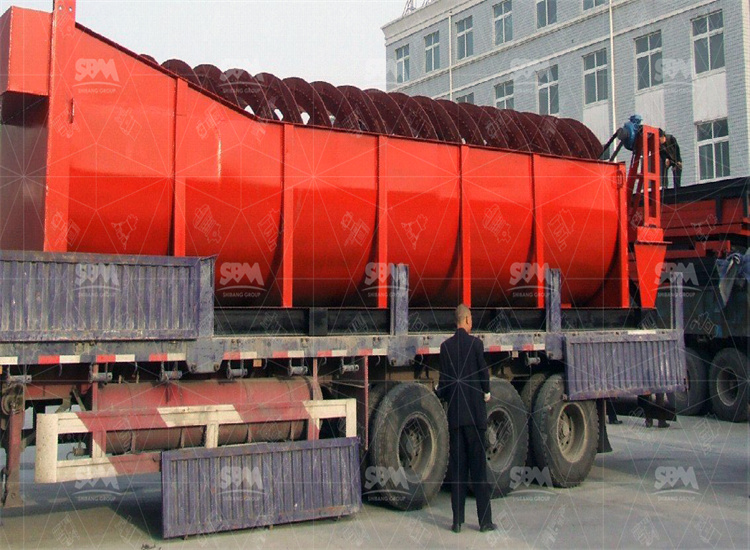This paper explains how a modern gold ore separating machine and grinding mill work together, outlines key specs, shows real project outcomes, and gives clear selection and maintenance guidance for plant owners; read on to decide confidently.
Gold ore separating machines, and grinding mills form the central, processing train in a gold plant. The separator removes gangue and increases grade; the mill reduces particle size to liberate fine gold. Together they determine recovery, throughput, and cost per ton. Moreover, operators must match both units for optimal flow, energy use, and wear life.

Grinding mills use impact and attrition to reduce ore size. Ball, SAG, or rod mills create target fineness expressed as P80 or D80. Separators, such as gravity concentrators, jig, shaker tables, or centrifugal separators, use density, inertia or fluid flow to separate minerals. The combined loop is a milling circuit with cyclone, classifier and, concentrate thickener; designers tune CSS/OSS, speed and feed to reach design metrics.
Operators evaluate: (1) Crushing ratio; (2) Chamber profile; (3) Close side setting (CSS) or open side setting (OSS); (4) Rotational speed (rpm); (5) Motor power and drive coupling; (6) Feed and product size (mm); (7) Throughput (t/h). For example, SAG mills commonly run at 74–78% of critical speed; CSS often ranges 3–15 mm for primary crushers; ball mill speed is 65–78% of critical; correct motor sizing includes 10–15% service margin. These figures reflect standard industry practice, and, apply across climates and ore types.
Grinders include shell, liners, bearings, trunnions, girth gear and pinion, and drive motor. Drives may be direct gear, pinion and girth, or variable-frequency motor with soft-start. Separators comprise feed box, rotor or deck, and tailings discharge; centrifugals add bowl and cone. Correct matching of motor power to gear ratio avoids overload, reduces slip, and extends life. Moreover, conveyor and feed control tie the train together for stable load.
Typical design targets: throughput 50–500 t/h per grinding line, depending on mill size; feed size 0–50 mm for mills after crushing; product P80 75–150 microns for liberation of free gold in many deposits. Recovery depends on liberation size and separator type; gravity plus cyanidation often reaches 90%+ on free-milling ores when circuit is optimized. Energy use averages 20–35 kWh/t in medium-hard ores,; variations are due to ore hardness, mill fill, and classifier efficiency.
Field data from multiple plants show average specific energy 22–32 kWh/t for ball mill circuits. Mean time between failures (MTBF) for major items (gearbox, pinion) often exceeds 18 months with proper lubrication and alignment; bearing & liner wear life ranges 6–18 months depending on liner choice. Scheduled maintenance cycles: daily checks, weekly lubrication, monthly alignment checks, and major overhaul every 12–36 months. Fault rates under 5% annually for critical components can be achieved, when a strict maintenance program, and spare parts plan is enforced.

Below is a compact parameter table for quick reference.
| Parameter | Range | Unit |
|---|---|---|
| Throughput | 50 – 500 | t/h |
| Feed size | 0 – 50 | mm |
| Product P80 | 75 – 150 | μm |
Circuits vary by ore: free-milling oxide ores need less grinding and favor gravity circuits; refractory sulfide ores require finer grinding, flotation, or roasting. In humid climates, sealed feeders, and positive-pressure dust control reduce corrosion; in cold climates, insulation, and heated lube systems improve reliability. Site specific design, therefore, must consider ore hardness, abrasiveness, and ambient conditions.
Step 1: Determine ore hardness (Bond work index), and liberation size. Step 2: Choose mill type (SAG+Ball vs Ball only) based on feed size and tonnage. Step 3: Select separator type: centrifugal for ultra-fine, jig or table for coarse gravity. Step 4: Match motor power and drive, with 10–15% margin. Step 5: Verify layout and maintenance access. Each step uses measurable inputs, and decision points are binary, removing ambiguity.
A1: Causes: overfilling, coarse feed, worn liners, poor classifier efficiency, or incorrect speed. First, check mill fill and liner profile; then verify classifier cut-size. Adjust grind, reline liners if wear >30%, and balance feed distribution. Regular energy audits locate losses.
A2: Review feed particle size distribution, increase gravity circuit retention time, add centrifugal concentrator or fine-tuning of table deck slope. Also check slurry density; small changes to pulp density often recover liberated particles. No single fix works; combine measures for best result.
A3: Proactive liner change, gearbox oil analysis, vibration monitoring, and bearing thermography. These extend MTBF and cut unplanned stops. Keep critical spares on-site, and train technicians for fast replacement.
Project profile: 120 t/h plant, hard ore, blocky, abrasive. Equipment supplied: 1x 7.3 m SAG mill, 2x 4.2 m ball mills, spiral classifiers, centrifugal concentrator and 1x shaker table. Design thinking: use SAG to handle high feed size and reduce crushing steps; follow with ball mills for final grind to P80 90 μm. Results: throughput met, recovery up 6 percentage points, energy dropped 10% after liner optimization. Client feedback, from SBM plant team: easier operation, and lower downtime, with predictable spare parts usage.

Project profile: 60 t/h, wet alluvium, high fines. Equipment: 2x high-speed centrifugal concentrators, desanders, vibratory feeders, and a compact slurry pump train. Design idea: prioritize fine particle recovery and simple maintenance. Outcome: free-gold recovery improved, consumable cost fell, and maintenance crew noted clear access for bowl and rotor service. Client reported faster commissioning and stable seasonal performance.
Install on firm foundations, align girth gear and pinion precisely, and verify coupling concentricity. Commission in stages: dry rotation test, lubrication checks, no-load run, progressive loading to full design. Document vibration and temperature baselines. Train operators during commissioning; hands-on training reduces early faults.
Maintain daily logs; follow weekly and monthly checks. Keep critical spares: liners, bearings, mechanical seals, oil filters, and a spare pinion. Planned relines reduce emergency downtime. Moreover, adopt oil analysis and vibration trend analysis to spot wear early.
Capital cost depends on capacity and automation; however a well-matched mill-separator train typically returns on investment within 18–36 months for mid-scale deposits. Savings derive from higher recovery, lower energy, and reduced downtime. Choose robust designs; low initial cost rarely equals lowest life-cycle cost.

Answer: A typical configuration uses a SAG mill 9–12 MW plus 2 ball mills sized to provide final grind. Verify Bond work index first; then size with a comminution balance calculation.
Answer: Often P80 25–75 μm. Refractory ores need finer grind for effective flotation or leach. Pilot tests determine exact target.
Answer: Yes, add centrifugal concentrators, reconfigure classifiers, or optimize control loops. Retrofits often yield fast, cost-effective gains.
Choose equipment by measured ore tests and clear KPIs. Prioritize energy efficiency, maintainability, and spare availability. For most mid-size plants, a combined SAG+Ball configuration with gravity concentration and centrifugal polishing gives best balance. Trust engineering metrics, but validate through pilot trials, and then scale. SBM field teams can support testing, and commissioning when requested.
Whatsapp:+8617329420102
Email: [email protected]
Address: No. 1688, Gaoke East Road, Pudong new district, Shanghai, China.
Online Service : Get Price
We value your feedback! Please complete the form below so that we can tailor our services to your specific needs.
